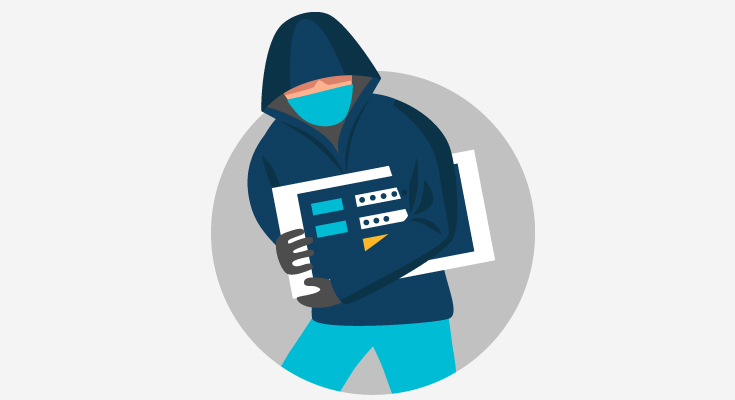The AML landscape is evolving continuously, so fraudsters come up with new ways to launder money. One of these new and unique ways to exploit the financial systems and launder money is cross-border trade.
Trade-based money laundering is becoming an issue. To prevent trade-based money laundering, new steps are being taken.
In this guide, we’ll dive into trade-based money laundering, and how it works.
What is Trade-Based Money Laundering?
Trade-based money laundering is when a fraudster moves illegal funds through the international trade system to clean them. TBML practices often include:
- Falsification of original price.
- Quantity and quality of the imported/exported goods.
TBML takes advantage of the complicated system of the trade system. Especially the international trade system where multiple parties and jurisdictions are involved. Multiple jurisdictions mean overlapping KYC, AML, and CDD rules and regulations.
TBML is slowly becoming a major concern for governing bodies around the world. It rose to its peak during the COVID era when supply chains and the regulatory landscape were disturbed.
Since then, several global firms have embedded supply chain risk management into their AML programs. Over 45% of global businesses claim that they’re focusing on improving the management of supply chain risks in 2023 and beyond.
How Does Trade-Based Money Laundering Work?
Fraudsters use trade-based money laundering in a number of ways, but the most common ones include:
- Over-invoicing – The exporter submits an invoice that’s overpriced to the importer, generating a payment that exceeds the value of the goods shipped. Importers often transfer the stated amount on the invoice instead of checking for the real value.
- Under-invoicing – The exporter sometimes submits an invoice that has less value than the products. They ship the goods with greater value and then transfer that value to the importer.
- Multi-invoice – The exporter sends an invoice to the importer multiple times for the same product/shipment. The exporter then transfers greater value from the importer to the exporter.
- Over-or under-shipment – The exporter ships more goods than they previously agreed on. They end up transferring greater value to the importer. Or, the exporter ships fewer goods than agreed on. The importer often pays the original amount without checking the goods.
- Misrepresenting the Quality – Goods shipped to the importers are purposefully misrepresented as being of higher quality. The importer pays for the high-quality goods but receives cheaper quality.
Examples of Trade-Based Money Laundering
There are some examples of trade-based money laundering that every business should be aware of. Prevention can only happen when businesses are aware of the latest trends.
Here are the biggest examples of trade-based money laundering:
- A letter of credit for a high-value cross-border import is highlighted to have anomalies when it is examined by the routing bank. When the bank investigates deeper, it reveals missing and unrecognized documentation with the import agents. The bank then rejects the transaction and returns the drawing documents.
- The first beneficiary of a multi-million dollar letter of credit has to supply medical goods for another country’s Bureau of Health. However, the second and ultimate beneficiary of the credit issues invoices that don’t match those submitted by the first. It’s shown that the first beneficiary has the invoices marked up by 300% and is additionally revealed to have a connection with the firm acting as the agent to the Bureau of Health.
- Several shell companies purchase electronics with funds derived from criminal activities and later sell the goods to buyers in high-risk countries that don’t have any due diligence. The shell companies receive the money. The banks that handle the transactions notice a number of red flags. The biggest red flag is that the companies are registered in high-risk countries.
Steps to Identify Trade-Based Money Laundering
Businesses may have an easier time spotting TBML activity if they’re familiar with the methodologies associated with it.
Here are the indicators of TBML:
- Unusually complicated or illogical corporate structures, such as the use of shell companies or companies registered in high-risk countries.
- Trading entities registered at mass registration addresses with no reference to any specific unit.
- Trading businesses that have addresses that don’t reflect the businesses in which they’re engaged.
- Missing, counterfeit, or fake trade documents.
- Trading businesses that don’t have an online presence or that have an online presence that doesn’t match their business’s stated services.
- Trading activities that don’t reflect a stated line of business, for example, car dealers trading in textiles or precious metals.
- Payments for imports that aren’t made by parties other than the account holder.
- Trading entities that purposefully complicate the use of financial products.
- Inconsistencies or discrepancies across trade documents such as contracts and invoices.
- Trade documents with values that aren’t consistent with market values or other comparable transactions.
- Trading entities that make very late changes to payment arrangements.
- Frequent cash deposits are just under the reporting thresholds.
How to Prevent and Detect TBML?
Since TBML can involve multiple parties and jurisdictions, and some of the schemes are very complicated to detect. To mitigate the risk of TBML, compliance teams need to have an understanding of business-wide risk assessments to determine their risk exposure.
Here’s how to prevent and detect TBML:
- Robust CDD
To uncover TBML, businesses of all kinds should implement CDD measures that use a combination of technology and expertise.
Businesses need to obtain a clear picture of all entities they do business with. To able to do that, businesses need to verify documents, ownership documents, address documents, and more. Compliance teams should ensure they have access to real-time document verification solution that helps them verify the identity of every entity they have to verify.
- Reputable Adverse Media Screening
Since adverse media can be a TBML structural risk indicator, businesses need to make sure their negative news screening solution can differentiate between true adverse media content at scale.








